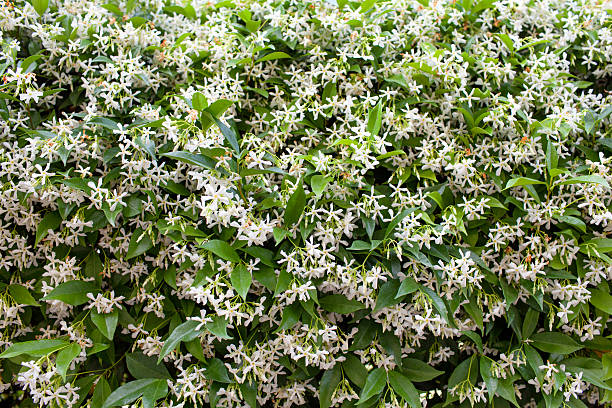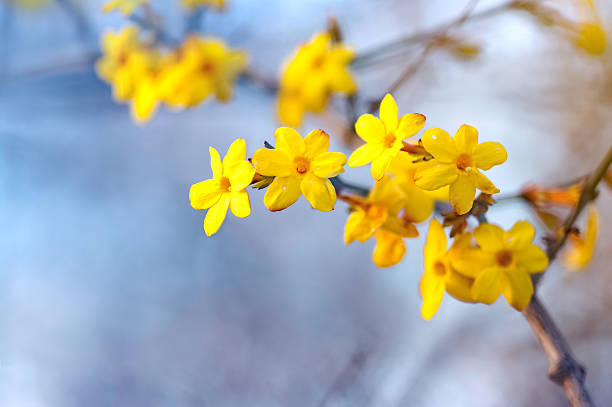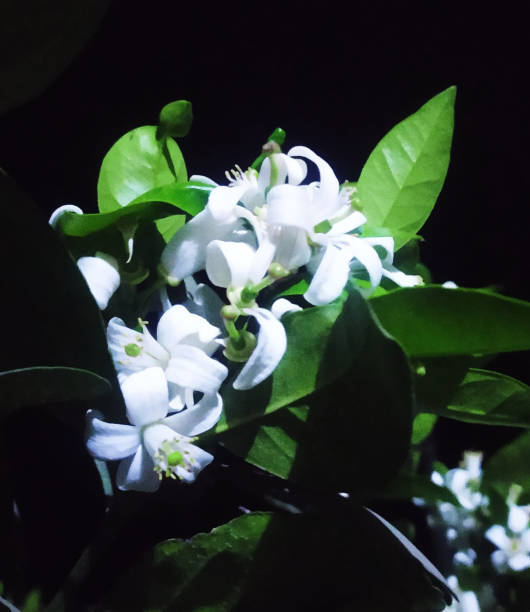Is Jasmine Evergreen?
Some Jasmine varieties are all green year-round. Others are deciduous. Flowers can be white, yellow, or even red and pink, depending on whether they bloom in the summer or winter. All jasmines have star-shaped flowers with a sweet and distinct scent. Hardier varieties can be grown on a wall or fence if they have wires to hold them in place, but some are only suitable for growing in a greenhouse or conservatory. Plant jasmine in a spot that gets plenty of sunlight, is well-protected and is near a place where you can relax and enjoy the scent of the flowers.

Table of Contents
Is Jasmine Perennial or Annual?
Jasmine is a perennial flower that will continue to bloom year after year. Depending on the climate zone in which they are grown, different varieties have different watering, space, and sunlight requirements. Some deciduous jasmine is tender and needs protection from the cold during winter. They will die back to their roots if temperatures drop below 20°F (-7°C) for more than 2 weeks each year. If grown in a hot climate or with no frost, these kinds can be pruned back annually so that new buds appear on their stems every few years as humidity increases throughout the summer.
Is Jasmine a Tropical Plant?
Jasmine is a tropical flowering plant that thrives in hotter climates and perfumes. Most varieties have a distinct scent that makes them popular even when they are not in season. The scent of jasmine can be found in various products, including teas, candles, soaps, and lotions. Jasmine has bright green, glossy foliage and prefers full sun to partial shade, as well as relatively fertile soil. Some jasmine plants are evergreen, meaning their green leaves will remain on the plant throughout the year. While growing jasmine requires some effort, the results are well worth it, as the plant will reward you with a profuse, showy display of blooms that will brighten even the most desolate of landscapes.

Is Jasmine Winter Hardy?
Many gardeners prefer to grow jasmine in containers so the plant can be brought indoors during the winter. If you are bringing jasmine indoors due to extreme cold, do so gradually, over about a week, to give the plant time to adjust to the reduced sunlight once indoors. A good way to accomplish this is to bring the plant inside at night and then reintroduce it to the outdoors during the day, gradually increasing the amount of time you leave it inside throughout the week. Once it is permanently inside, position it in the sunniest part of the house.
To ensure a successful overwintering season, the following conditions must be fulfilled:
- Place in a bright, cool environment; temperatures of 10° C are ideal.
- There is no need to fertilize the jasmine plant from October to March.
- Keep the root bales moist by reducing the amount of water you use.
- Ventilate the winter quarter regularly.
- Pests should be checked periodically on the plant.

Is Jasmine a Plant That Can Be Grown Indoors or Outdoors?
Jasmine is a flower that can be grown both outdoors and indoors. Dwarf cultivars thrive best indoors, but vines can also thrive in a small space if appropriately trained. During the dormant season, pinch or prune the plant to keep it at the desired height and shape for the next growing season.
Care Tips
Indoor
When plants grow (from April to September), water them moderately; when they are dormant, water them less frequently (autumn and winter). When the growing season begins in late spring and continues into early autumn, feed with a high potassium every few weeks during the growing season.
Outdoor
During dry weather, you can water as much as you want. It is necessary to water plants in containers regularly from the beginning of spring to autumn. For best results, feed once a year in the spring with a controlled-release feed applied once every two weeks from March to September with a liquid feed applied once every fortnight.
